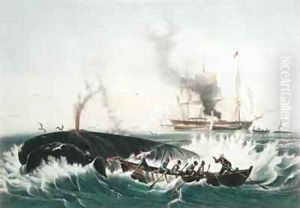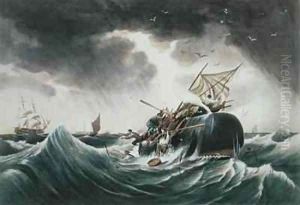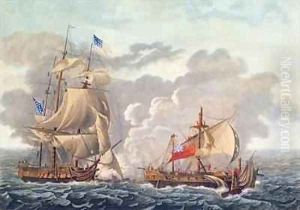Garneray, Louis Ambroise Paintings
Louis Ambroise Garneray was a French painter and engraver known for his maritime paintings and his role as one of the early Romantic painters in French art. Born on February 19, 1783, in Paris, France, Garneray grew up in a time of political turmoil and change, as the French Revolution unfolded during his childhood.
Garneray showed an early interest in art and the sea, which would be the two defining elements of his career. He went to sea as a young man and joined the French Navy. His experiences at sea, including his time spent as a prisoner of war in England after being captured during the Napoleonic Wars, had a profound impact on his artistic work. During his captivity, he began to create detailed illustrations of ships and sea battles, which laid the groundwork for his future artistic endeavors.
After his release and return to France, Garneray turned to painting as his primary profession. He became known for his vivid and realistic depictions of naval battles, ships, and harbor scenes, drawing on his extensive firsthand experience as a sailor. His works were celebrated for their accuracy and attention to detail, and he gained a reputation as a leading maritime artist of his time.
Garneray's career as an artist coincided with the Romantic movement, which emphasized emotion, individualism, and the glorification of nature. His paintings often reflected these themes, with dramatic seascapes and moments of human triumph or tragedy at sea. He was appointed as the official painter of the French Navy, and his works were exhibited at the Paris Salon, where they received critical acclaim.
Despite his success as a painter, Garneray also faced financial difficulties throughout his life. He supplemented his income with engraving and printmaking, producing a series of prints that were popular with the public. In addition to his maritime subjects, Garneray also explored historical and mythological themes in his work.
Garneray's legacy as an artist is significant, particularly in the realm of maritime painting. His works capture the spirit of the sea and the lives of those who depended upon it, whether for warfare, exploration, or trade. He passed away on September 11, 1857, in Paris, leaving behind a body of work that continues to be admired for its beauty and historical value. Today, his paintings can be found in museums and private collections around the world.




